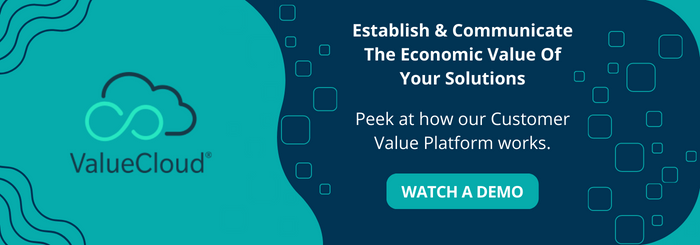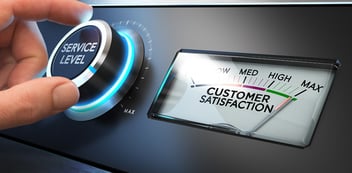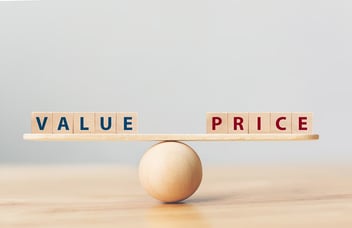How to Scale Customer Success

Customers stay loyal to a brand when they see value in a product. It doesn’t matter how many features the product has or how many problems it can solve. If a product can’t meet at least one business need, the customer will seek greener pastures elsewhere.
This is the driving principle behind customer success — the strategy of proactively helping customers achieve their goals with a product.
Learning how to scale customer success can be challenging, mostly because the process is so individualized to the buyer. The most important factor is to take a proactive approach rather than a reactive one.
In the latter scenario, you target your value messages to the information you’ve gathered from each customer. In the former, however, you scale your customer success management by understanding the types of customers who buy your product — which saves you valuable time and money and yields better results for customer retention.
Segment Customers Based on Experiential Needs
Customer segmentation is the key to a scalable customer success strategy. Without it, customer success teams approach each customer with the same strategy. That strategy will be a match for some customers but miss others.
Determining Customers’ Ideal Experiences
Every buyer wants to have a certain kind of experience with your product. That experience depends on three things:
- The customers’ use cases
- How those use cases align with your product features
- What type of support the customer needs from your customer success team
The customer won’t always know what their success picture looks like. You need to determine that based on the buyer’s needs and how similar buyers have used your product.
Elements of a Useful Customer Segment
Avoid the temptation to segment based on annual recurring revenue (ARR). Many customer success teams go this route, assuming a high-yield customer needs more attention. It’s more important to understand and deliver the type of attention a specific customer requires.
To scale customer success well, segment based on their desired touch level and interaction preference. Form your segments so you can relatively easily predict a future customer’s placement. If you offer customized service packages, consider that also.
Differentiating Segments
When differentiating segments, you may have one segment of customers who receive a bespoke solution and have a dedicated Customer Success Manager (CSM) to work one-on-one with them. These customers may vary in ARR levels but want to see the same value.
Another segment may use out-of-the-box solutions and prefer to troubleshoot independently. They would need a different resource set. You need to determine what that is and how to offer it.
Develop Customer Value Propositions
A scalable customer success strategy starts with a basic Customer Value Proposition, or CVP. The CVP articulates how your product addresses specific customer pain points and what the experience is like.
Your CVP should touch on three things:
- The solution you provide to a potential customer problem
- Why you’re the best choice to provide that solution
- How you provide your services
Consider this template as a starting point:
{Company/Product/Service} helps/makes it easier for {target audience} to {desired solution} by/with {service or key features}.
Filled in with details for a software-as-a-service (SaaS) company, it might look like this:
Our software helps human resources departments to reduce timekeeping errors with automated record-keeping and cloud-based communication tools.
Your overall CVP should appeal to all customer segments. If appropriate, you can also sub-divide it into segment-specific value propositions. This is most important if your segments have significantly different use cases and desired outcomes.
Plan for Value Delivery in Teams and With Customers
Your customer segments and CVPs tell you what buyers need. To deliver customer success at scale, you need a plan for helping each buyer achieve those goals.
By now, you’ve defined what the customer should expect to get. If you’ve segmented well and laid out expectations that match the pain points you’ll address, you can deliver value much more easily.
Defining Value Delivery
Consider your customer segments and the solutions you offer each segment. From there, create a plan for orchestrating and highlighting progress toward those solutions.
Each segment-specific plan should have three basic elements:
- Expectations for what the customer should experience in the next 30, 60, or 90 days
- What the buyer will do to apply and integrate the solution
- What support(s) they will receive from your customer success team
Consider creating segment-specific customer success milestones, which you can communicate to the buyer as reference points.
These shouldn’t be promises or guarantees. They’re experiences or changes the buyer can expect to see within a certain time frame. For instance, if your segment’s pain point is disconnected data, an appropriate milestone might be “easier access to actionable information.”
Gather Impact Data
Part of learning how to scale customer success is making past successes work for you. It’s not enough to treat each customer as a closed-loop system, promising success and then delivering it. This approach may reduce churn on an individual level, but it doesn’t help you grow.
The best way to communicate your value proposition is with detailed data. There are two key action steps here:
- Gathering quantifiable data (cost reduction, productivity metrics) and subjective reports (testimonials and reports) from real customers
- Choosing the most meaningful data set for each customer
Again, segmentation is critical. Data from one segment will be most useful to another customer from the same or a related segment.
Developing Next-Steps Strategies for Existing Customers
Truly scalable customer success is always growing — the journey shouldn’t stop when a customer has realized the value they needed from your product. Scalable customer success continues not only through new customer acquisition but also value optimization.
Value optimization happens when a customer has realized value from your product or solution and wants to go further. This is a time to keep the momentum going.
Know what additional value you can offer beyond the basics for each segment. Data makes itself useful here as well. What have similar customers done with your product or solution, and what can you suggest in this case?
When your customer success teams can bring customers smoothly to the next level, you can secure customer loyalty and drive referrals.
Developing a Value Realization Strategy
Value realization is the process by which customers realize business value from a product or solution, starting with the first touch. The more you know about your buyers’ value realization journey, the quicker you can learn how to scale customer success.
As a leader in value realization and customer success, DecisionLink has the tools to help. Check out DecisionLink’s Smart Web Calculator to learn more about how customer success scalability can help your business, or take a look at the ValueCloud® value realization bundle to discover the tools at your disposal.
Continue Learning:
"The Key to Value Realization" webinar - learn how to establish trust with customers when it comes to pricing and how to achieve profit growth by embedding Value Realization methods into your organization.

 ValueCloud
ValueCloud
.png?width=118&height=76&name=Rectangle%20(3).png) ValueCloud Ignite
ValueCloud Ignite
.png?width=92&height=92&name=Rectangle%20(4).png) Free Assessment
Free Assessment
.png?width=100&height=100&name=Rectangle%20(5).png) Watch a Demo
Watch a Demo
.png?width=82&height=96&name=Rectangle%20(6).png) Value Calculator
Value Calculator

.png?width=62&height=51&name=Group%2010%20(1).png) Marketing
Marketing
 Sales
Sales
 Customer Success
Customer Success
 Engage Prospects
Engage Prospects
 Win Deals Faster
Win Deals Faster
 Retain Customers
Retain Customers
.png?width=62&height=62&name=Rectangle%20(8).png) Adopt and Scale
Adopt and Scale
.png?width=54&height=54&name=Rectangle%20(9).png) Cybersecurity
Cybersecurity
 Healthcare
Healthcare
.png?width=54&height=54&name=Rectangle%20(10).png) IT & Software
IT & Software




